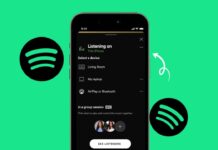
Social media platforms connect billions of people globally. They provide free services but earn huge revenue. How do Social Media Platforms Generate Money? Let’s explore their key strategies. From advertising to subscriptions, every model contributes uniquely.
also read: How to Use ChatGPT on WhatsApp: A Step-By-Step Guide
Advertising: The Core Revenue Model
Advertising remains the primary income source. Platforms offer businesses targeted advertising options. Here’s how it works:
- Targeted Ads: Ads are personalized using user data. For instance, Facebook uses interests and activity patterns. This helps businesses reach the right audience effectively.
- Various Ad Formats: Platforms offer different ad formats, like video ads, carousel posts, and banners. These formats keep users engaged while promoting brands.
- Revenue Sharing with Creators: YouTube shares ad revenue with video creators. Creators earn by allowing ads on their videos. This motivates them to produce quality content.
Monetizing User Data
User data holds immense value for these platforms. They collect and use data insights to generate revenue. Here’s how:
- Selling Data Insights: Aggregated user data is sold to marketers. Businesses refine strategies using this data for better results.
- AI Model Training: Platforms license data to tech firms for AI training. For example, Reddit generates revenue by selling its data to researchers.
Freemium Models
Freemium services attract users with basic free features. Premium features are offered at a cost. Examples include:
- LinkedIn Premium: Offers advanced networking and job-search tools. Users pay for benefits like InMail credits and applicant insights.
- Reddit Premium: Provides an ad-free experience and exclusive perks. Loyal users pay for enhanced usability.
- Tinder Plus: Unlocks unlimited swipes and location features. These upgrades appeal to frequent users.
Freemium models balance accessibility and profitability efficiently.
In-App Purchases
In-app purchases improve user experiences and generate income. These are especially common in entertainment apps. Examples include:
- TikTok Coins: Users buy coins to gift creators during streams. Creators convert these into real earnings.
- Instagram Badges: Fans purchase badges during live sessions to support creators.
- Gaming Enhancements: Platforms like Candy Crush sell virtual power-ups. These keep users engaged while driving profits.
Virtual Gifting & Tipping
Virtual gifts enable fans to support creators directly. Platforms benefit by retaining a share of transactions. Examples include:
- YouTube Super Chats: Fans pay to highlight messages during live streams. Creators earn from these payments, boosting their motivation.
- TikTok Virtual Gifts: Users send digital gifts during live videos. These gifts contribute to creator income while ensuring platform profits.
E-Commerce Integration
Social media platforms are integrating shopping features. These simplify purchasing for users. Examples include:
- Instagram Shops: Businesses create digital storefronts on Instagram. Users browse and buy products seamlessly within the app.
- Shoppable Posts: Brands tag products in posts for direct purchases. This makes buying quick and user-friendly.
- Pinterest Shopping: Users discover curated products and purchase directly. Pinterest bridges product discovery and purchase effortlessly.
Subscription Services
Subscription models offer exclusive content or features. These ensure steady revenue. Examples include:
- LinkedIn Career Subscriptions: Provides advanced career tools like applicant insights. Professionals benefit from these premium features.
- YouTube Premium: Offers ad-free viewing and exclusive videos. Subscribers enjoy uninterrupted entertainment.
- Patreon: Allows creators to offer exclusive content for paid fans. This strengthens creator-fan relationships.
Live Streaming & Events
Live streaming has become a lucrative feature. Platforms earn through ads, sponsorships, and ticket sales. Examples include:
- Ticketed Live Events: Creators host exclusive sessions for paying audiences. Fans enjoy unique content while supporting creators.
- Sponsored Streams: Brands collaborate with influencers for live promotions. These partnerships benefit both parties.
- Stream Ads: Ads shown during live streams generate extra revenue. Viewers remain engaged, ensuring profit.
API Access Fees
Platforms charge developers for accessing their APIs. This allows app integrations with social media. For instance:
- Reddit API Fees: Developers pay to access Reddit’s data. This model balances developer needs with platform profitability.
Venture Capital & Investments
In their early stages, platforms rely on venture capital. Investors provide funds in exchange for equity. For example:
- Facebook’s Growth Story: Early investments fueled Facebook’s rapid expansion. These funds supported platform innovation and scaling.
Venture capital plays a crucial role in startup success.
Leveraging Innovation for Profit
Social media platforms constantly innovate to stay relevant. New features enhance engagement and revenue. Examples include:
- Snapchat AR Filters: Fun augmented reality filters attract users. Brands collaborate to create custom filters for campaigns.
- Instagram Reels: Short videos keep users engaged. Advertisers use reels for creative promotions.
These innovations ensure continuous user interest and profitability.
Social media platforms use diverse strategies to earn revenue. Advertising, subscriptions, and e-commerce play vital roles. Data monetization and virtual gifting also contribute significantly. As technology advances, platforms will keep innovating. Their adaptability ensures future growth and influence.







